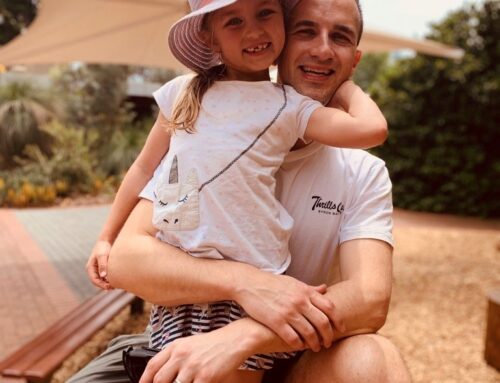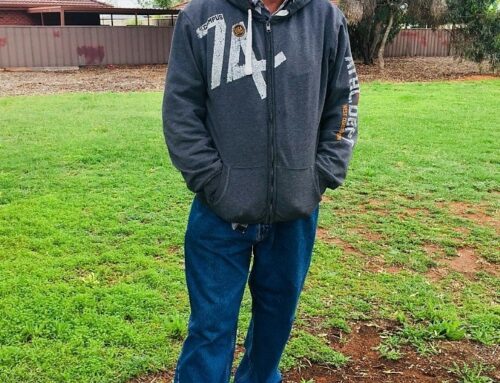Society needs to question what it values if it is to prevent birds from disappearing, experts warn, after woodland bird numbers in the Mount Lofty Ranges were found to have dropped 45 per cent in two decades.
Key points:
- Woodland bird numbers in the Mount Lofty Ranges have declined significantly since European settlement
- Habitat clearance has been blamed for the decline
- Experts believe that large scale habitat restoration is the only way to bring birds back
A University of Adelaide paper published earlier this month revealed that “specialist birds” like superb fairy-wrens and New Holland honeyeaters had been in significant decline in the ranges, mostly as a result of deteriorating and cleared habitat.
It found 75 per cent of birds that relied on woodlands were affected, while 58 per cent of bird species overall were in decline.
“These birds disappearing from the landscapes in which we all live is really telling us that none of us are living sustainably on our landscapes,” South Australian ecologist David Paton said.
“It poses some fundamental questions, I think, about what society wants, and what do we value?”
Other heavily affected birds include the European goldfinch, the chestnut-rumped heathwren, the brown and striated thornbills and the sacred kingfisher.
Supplied: Leo Berzins
)Vegetation clearance driving down numbers
The University of Adelaide study, undertaken by its Centre for Global Food and Resources, utilised data from the Mount Lofty Ranges Woodland Bird Monitoring Program, which has been running since 1999.
The program includes visiting 151 sites from Truro to Cape Jervis three times a year.
ABC Radio Adelaide: Malcolm Sutton
)Lead researcher and Nature Conservation Society of SA president Patrick O’Connor said grazing pressure from stock, feral animals and abundant kangaroos, had been driving down the quality of woodland habitat, along with prescribed burn-offs.
“There is a long-term trend in removing vegetation and clearance,” the associate professor told ABC Radio Adelaide.
At the same time, however, the opening up of the land had meant large-bodied carnivorous and “gregarious birds” such as galahs, sulphur-crested cockatoos and parakeets, were increasing.
“Those species like more open habitats, so they’re more able to compete when we take away the mid and understory,” Mr O’Connor said.
A ‘depressing’ state
Birds SA, or the South Australian Ornithological Association, was established in 1899 to become the oldest birding association in the country.
Its bird record secretary Graham Carpenter has been birding for 40 years and noticed an accelerating decline over that time.
Supplied: Mat and Cathy Gilfedder
)“There’s certainly places that I used to visit as a kid, like Belair National Park, where I used to see 50 types of birds in one day,” he said.
This included birds like the black-chinned honeyeater, the hooded robin and the jacky winter.
“Even before I started bird watching, there’s birds that people used to see back in the 1930s that had gone by the time I started,” Mr Carpenter said.
“It makes me feel very depressed.
“I’ll take out a younger person, and they’ll see 20 birds at one of these spots where I used to see 50, and they’ll think that’s really good because they’ve nothing to compare it with.”
Rebuilding habitats
David Paton, an associate professor at the University of Adelaide, is the director of not-for-profit group Bio R.
He said Bio R works to reconstruct native habitats, having recently “put back about 175 hectares of complex habitat” at a farm on Kangaroo Island.
It meant land that was only supporting one bird per hectare, such as magpies and other widespread species, was now supporting about 10 birds per hectare.
ABC Radio Adelaide: Malcolm Sutton
)Dr Paton said the Mount Lofty Ranges were cleared of all but 10 per cent of their vegetation by European settlers, and even though it was the first state to introduce legislation to prevent further large-scale clearance, the damage was done.
“That’s largely been in place since the 1980s but with just 10 per cent of the habitat left, the prediction is you’ll lose half of the woodland bird species unless you put back more habitat, at scale,” he said.
“Many of these birds species that are struggling have home ranges of 200 hectares, which is 200 football fields of good quality woodland habitat, and there are very few places in the Mt Lofty Ranges where that amount of habitat exists.”
Large scale approach required
Some other restoration projects underway include 500 hectares at the Para Woodlands Nature Reserve near Gawler.
It is a former farm donated to the Nature Foundation SA by Elizabeth Law-Smith and her husband David, and includes land also donated to the cause by the Department for Environment and Water.
And early last year the state and federal governments pledged $1.2 million to a Woodland Bird Resilience Program, which aimed to restore habitat destroyed by the Cudlee Creek Bushfire of late 2019.
Mr O’Connor said birds could be considered an “indicator set” of a general decline in ecosystem function.
He said society had the knowledge and ability to restore the systems and it could be done in a way that benefitted both people and the landscape, but restoration so far had not gone far enough.
“But if you were a shopkeeper, 45 per cent of your stock has walked out the door over these past 20 years.
“Programs we have running at the moment, are about the scale of restocking the yoghurt.”





